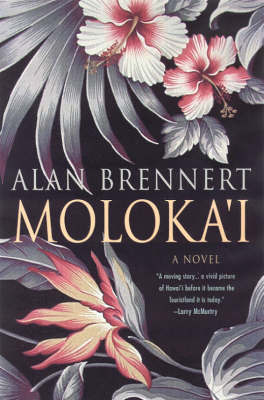Reviewed by nannah on
Book content warnings:
- transphobia
- transmisogyny
- abuse
- lots and lots of (sometimes violent) ableism
In 1892, seven-year-old Rachel Kalama from Honolulu has a mark on her leg that won't go away. It's the first sign of leprosy, and when her sister accidentally spills her secret, Rachel's forced away from her family and sent to Moloka'i, a quarantined island. Her own mom won't even write to her anymore, and she thinks her life is over. But life on Moloka'i isn't the death sentence it seems to be, and her life--with all its heartache, joys, love, and everything in between--has just begun.
Rachel Kalama is the perfect main character for this book. She's spirited and full of life in a place that sometimes is painfully short of it. I never grow tired of hearing out her thoughts and dreams and hopes. It's also probably due to the book's emotionally gripping prose itself, even though at times it can be a bit stilted and pass over important parts of the narrative to later summarize over them (such as Rachel's father passing away).
I also loved learning about this part of history I'd never learned about before but really should have. It really wasn't that long ago that any of this happened. I even talked about this to one of my friends, and she was so surprised that any of this happened in the early 1900s because she'd been so sure that leprosy was one of those things that happened sooooo long ago! Again, the stuff in this book is something people like us really should have heard about before but didn't.
About halfway the book included a māhū, a third-gendered person in traditional Hawaii, and from what I understand . . . a trans woman by today's standards and to Hawaii today? In any case, I was thrilled for there to be a trans woman of color included in this important historical novel! Until . . . she was treated like shit. The way she was """revealed""" to be a māhū was by the all-contemptible shock factor method. AKA, have her genitals revealed to the main character before the trans person was allowed to "come out", so to say. And here, a violent reaction is combined! Leilani, the māhū, was beaten beforehand by a man who was "embarrassed" to have liked her, a trans woman.
All in all, yuck yuck yuck. If the author had done any research at all on trans people's feelings at all on the subject, he'd realize that wow! This is the most unfeeling way to go about introducing a trans person, especially a trans woman, who today are faced with the most violence and hate!
And then Rachel feels deceived and cheated. Later in the scene she comes around, to later refer to a group of girls and Leilani as "girls", whatever that means. And when Leilani dies about halfway through the book (her appearance in the novel as a whole is fleeting, unfortunately), Rachel makes a mention in her mind about she or Leilani not having revealed her "true gender" to everyone. ?? Again, whatever that means . . . except I know what it means. Alan Brennert doesn't consider trans women to be women.
There's a middle ground here, which is the māhū, the third gender of traditional Hawaii, but Leilani as a character always said she wanted to be a woman. Said she had always wanted to be a woman since she was a small girl! If you're an author, you need to remember who your audience is, and what many are going to take away from this is that "trans woman = 'not a girl' when Rachel says "girls" and 'not a girl' when Rachel says "true gender" ", which cannot be allowed.
I'm mad that this happened, because this novel is achingly beautiful, and I loved so much of it. As Rachel ages, Moloka'i and her community/town of Kalaupapa ages with her. And at the end, in 1970, a very important statement is made. One of the patients of Kalaupapa invites a tourist and others to the town, saying how the State of Hawaii is trying to turn Kalaupapa and Moloka'i into a resort because Moloka'i's land is too valuable. He says,
"To them it's just real estate, but to us it's a lot more. The government forced us to come here, and now that it's the only place we know, now that it's home, they want us to give it up? . . . We won't go without a fight, though. Not this time."
As of 2015, six patients still live in Kalaupapa. When they die, there's a plan to erect a monument dedicated to the 8,000 patients who lived there. The National Park Service currently has four proposals for the land:
1). Make no changes
2). Maintain the status quo, but develop a strategy to manage the area when the Department of Health operations end after the last patient dies
3). Open the park to visitors, allowing unrestricted access
4). Establish an entry-pass system and require orientation for anyone who travels to Kalaupapa. Under this proposal, which the NPS prefers, supervised visitation would also be expanded
Reading updates
- Started reading
- 23 September, 2016: Finished reading
- 23 September, 2016: Reviewed
